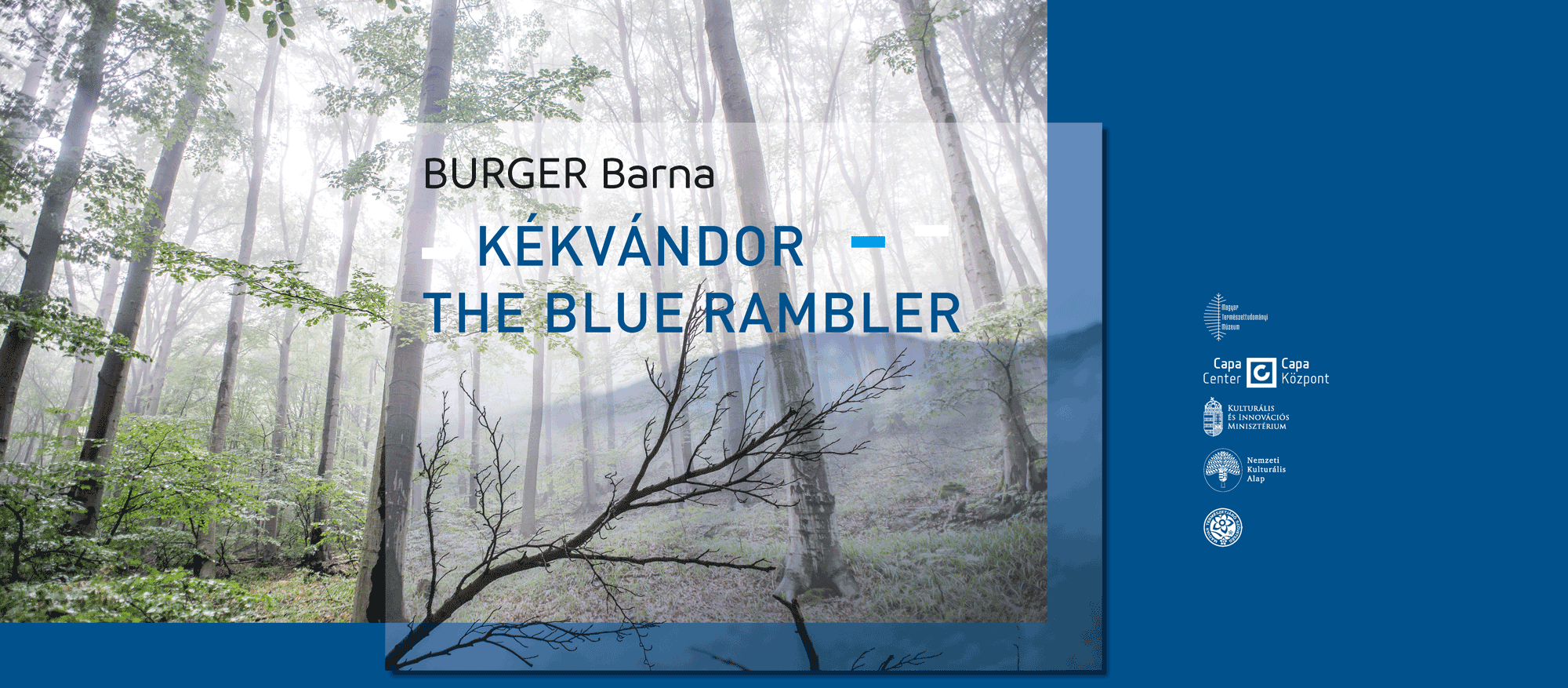Prior to the 1960s, research focused on morphological crystallography and descriptive mineralogy. In the 1960s, igneous and sedimentary petrology were the main fields of interest, while from the mid-1980s, igneous and metamorphic petrology, soil mineralogy and descriptive mineralogy became the priorities.
Topographical and descriptive mineralogy
Topographical mineralogy of Hungary, i.e. the survey of minerals of the country, belongs to our traditional research fields. This research is carried out in co-operation with colleagues from the Department of Mineralogy, Eötvös Loránd University, the Department of Mineralogy and Petrology, University of Miskolc, and the Department of Mineralogy, Herman Ottó Museum, Miskolc. We also participate in editing the journal Topographia Mineralogica Hungariae, which describes the minerals of certain localities or geographical areas of Hungary.
Descriptive mineralogy deals with the properties and identification of minerals. In this field we focus on the re-examination of inadequately described minerals discovered in the Carpathian region. These investigations, requiring a wide range of analytical equipment, are carried out in co-operation with many other institutions.
Environmental mineralogy
Environmental mineralogical research has become more important due to the growing impact of mankind on the environment. This field includes the study of characteristic features, formation, mobilisation and adsorption of surface and near-surface minerals that were formed by nature or human activity. Studying mineral matters that are harmful to living organisms including humans (atmospheric pollution: mineral dust, asbestos; soil contamination: poisonous or radioactive materials etc.) is particularly essential. Research is aimed at the detection and characterisation of existent pollution sources, which may help prevent or eliminate pollution.
In this research field, we take part in the mineralogical study of heavy metal pollution caused by acid mine drainage in the area Mátraszentimre-Gyöngyösoroszi (former mining site under recultivation).
Igneous petrology and geochemistry
Basalt
One of our topics in this research includes the study of the Pliocene -Pleistocene (0.4 to 5 million years old) alkaline basaltic rocks, their inclusions, megacrysts and minerals of their vesicles from the Nógrád–Gemer basalt area (mostly from the recently established Novohrad–Nógrád Geopark). Investigation of megacrysts and rock inclusions (xenoliths), entrapped into the magma and transported to or near the surface during volcanic eruption, provides information on the source of the basaltic magma, the upper mantle (in 25-30 km depth below the Carpathian-Pannonian region; ultrabasic xenoliths), the lower crust (basic xenoliths) and the older basement rocks beneath the basalt (sedimentary, metamorphic and acidic igneous rocks) as well. The detailed study of inclusions (size, frequency, external features, rock fabric, mineral composition, chemistry, alterations and transformations) can help us reveal the formation environment and the processes that modified the basaltic melt (differentiation and mixing of the magma, assimilation of the country rocks).
The vesicles, formed during the solidification of the basaltic melt, contain varied mineral paragenesis. Their study belongs to the field of topographic mineralogy.
Granite
We investigate granite, the most widespread intrusive felsic igneous rock, partly within the framework of a doctoral programme. Studied localities are found in Mórágy Hills, South-Hungary and in the vicinity of Rastenberg, Austria, at the southern part of the Bohemian Massif. We investigate the mineralogy, geochemistry and geochronology of the granitoid rocks outcropping there. Both places are at the eastern-most margin of the Western Central European Variscan collision zone.
The petrological and geochemical research of the Variscan (340–350 million-years-old) granitoid rocks of the Central and South Bohemian Plutonic Complexes has a long history. By accurate dating of geological processes that affected these rocks, we could give a paleotectonic reconstruction of these formations and clarify the still uncleared details of the origin of these granitoid rocks. Our data would provide a new chance for correlation with other granitoids of the European Variscan collision belt. The adequate combination of up-to-date mineralogical investigation methods and approach of geology is extremely important for the usability of the data obtained during the measurements.
Ore geology
The main aim of our recent ore geological research is to detect the traces of the ancient genetic processes that formed Hungarian manganese deposits. According to the principle of actualism, laid by Charles Lyell, “the present is the key to the past”. In other words, present-day geological processes also existed in the past, so the processes of the past can be reconstructed using recent observations. In many cases, this principle is in fact applicable for ore deposit research, but sometimes there is no exact analogue between the recent and the million-years-old formations. Recent manganese-oxide precipitation in the seafloor also represents an exception to Lyell’s principle, as mineralogical features of sedimentary manganese deposits and modern seafloor sediments are different. Knowledge about the present-day environment, therefore, could hardly be fitted into a paleoenvironmental reconstruction. Micrometer-scale comparative mineralogical investigations, however, can help us to gain a deeper insight into ancient geological processes. Knowledge of the composition, structure and relative position of the mineral grains forming the deposit gives key information for the refinement of the knowledge about the genesis of the deposits.
History of mineralogy (in broad sense)
Hungary used to be a leading power in mining, and many of her mines and quarries became famous for their rare or beautiful minerals. As this region belongs to the “early homelands” of mineral collecting, Hungarian mineralogy also has a long history as well. Our research in the field of science history is directed towards the history of mineral collecting, mineralogy and its institutions in Hungary. Special attention is paid to the history of minerals discovered in the Carpathian region and of the meteorites that were found here. Databases related to this research area include a meteoritical database and the searchable gazetteer of mineral locality names of the Carpathian Basin, both accessible on the website of the HNHM.
Research in the near past
Igneous petrology
Petrographical and geochemical research of upper mantle-derived peridotite and lower crust-derived granulite xenoliths was intensive in the last few decades at our department. The sampling of the 20–30 km deep lower crust and the deeper upper mantle is impossible even by deep drillings. The “raw material” of the lava and tuff rocks of basalt volcanoes, however, had formed originally in the upper mantle and was erupted from there. In exceptional cases, these rocks may contain xenoliths ( i.e. rock fragments), which were displaced from the upper mantle or lower crustal rocks. The study of these xenoliths brought several interesting results that lead to far-reaching geodynamical conclusions. For example, the upper mantle below the Carpathian Basin proved to be oceanic type rather than continental. Although it may have appeared to be improbable for the first time, it can be explained quite reasonably by the geodynamical theory of plate tectonism today. Another significant result is the finding of many garnet-rich granulite xenoliths, which could have formed at very high pressure in 40–50 km depth in the crust, according to our calculations. At present, however, the crust below the Carpathian Basin is thin (25–30 km) as compared to the world average. This unexpected result is the first indirect but important proof of the existence of a thicker crust prior to the subsidence of the Carpathian Basin.
Metamorphic petrology
Metamorphic rocks are abundant in the basement of the Pannonian Basin. Their surface outcrops are limited to small areas but several thousands of deep-drillings found them below the younger sedimentary cover. Revealing the evolutionand age-relations of the rocks not only contributes to the comprehension of the structure, evolution and palaeogeography of the basement but it also is very important for hydrocarbon exploration. Our research was focused on the Tisza Unite, which is one of the main structural units of the Pannonian Basin.
The age determination studies of the metamorphic rocks of Hungary were made in co-operation with the ATOMKI (Institute of Nuclear Research of the Hungarian Academy of Sciences, Debrecen) and the Dept. of Geology, University of Vienna. The main aim of this work was the recognition of the different stages of the evolution of the metamorphic rocks and the timing of these stages. In this way separate units of the crust could be correlated with each other. K/Ar és Ar40/Ar39 isotope measurements of separated minerals were used as a research method. Sm/Nd isotope composition of garnet samples was also studied.
The results confirmed the widespread presence of Variscan crystalline rocks in the whole area of the Tisza Unit. These rocks were characterised by the presence of kyanite or andalusite. They have been metamorphosed under medium to low pressure. The presence of a medium-grade Permotriassic metamorphism , overprinted by a Cretaceous (Alpine) metamorphism at the Algyő metamorphic rise (Algyő High), has also been proved. The metamorphic and structural evolution of the rocks suggests that the Algyő High is an Alpine nappe, which can be related to the Saualp-Koralp complex from the Austroalpine structural unit of the Austrian Alps.
Soil mineralogy
Soil mineralogy was a special research field of the department. Minerals that constitute solid rocks may occur in soils and have considerable effects on their characteristics. We prepared a general literature survey of the influence of soil minerals on various (e.g. physical, water-management, physicochemical, colloidal) properties of soils and their role in soil formation and fertility.
We investigated the structural and textural properties of soils that can be observable by optical microscopy (micromorphology). An overall characterisation of micromorphology of the soil types in Hungary was prepared on the basis of these investigations. A review was written on the basis of a literature survey on the interrelations between micromorphological features and soil-forming processes and the contribution of micromorphological research to the solution of problems of general and applied soil science (soil tillage, conservation, fertilising, reclamation, irrigation) was discussed in details.
In addition to these comprehensive works, some specific questions have also been studied in details. The distributions of calcite and dolomite were determined in different size separate of salt-affected soils in Kiskunság region (Hungary); results were interpreted from the aspects of carbonate dynamics and soil formation. The accumulation of silica (both in solid and liquid phases) in the solodized horizon of typical solodized meadow solonetz soils in Hungary was proved and the clay mineral distribution was determined. A mineralogical investigation on salt-efflorescences in Hungary was also carried on.



